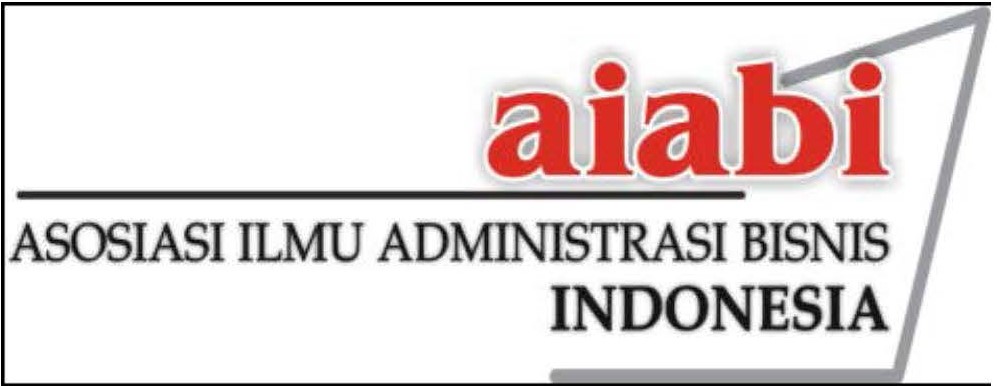PERAN KETERLIBATAN PELANGGAN TERHADAP RETENSI PELANGGAN PADA KONDISI PASCAPANDEMI: STUDI PADA PEMBELIAN ONLINE PRODUK MAKANAN SEHAT
Abstrak
Situasi setelah terjadinya pandemi yang melanda dunia dalam tiga tahun terakhir telah mengubah perilaku belanja masyarakat di kondisi normal baru yang ditunjukkan melalui diferensiasi pelanggan dalam pemilihan belanja ke toko fisik atau secara online, termasuk pembelian makanan. Setelah mengalami kondisi tersebut masyarakat mulai belajar untuk menjalani gaya hidup yang lebih sehat dengan mengonsumsi makanan sehat untuk menjaga sistem kekebalan tubuh, sementara bisnis ritel makanan berjuang untuk menjaga bisnis dan mempertahankan pelanggan dengan menyediakan platform online untuk kenyamanan pelanggan dalam memesan makanan. Tujuan dari penelitian ini yaitu: (1) menganalisis karakteristik pelanggan e-commerce bahan makanan siap masak dan katering sehat, (2) menganalisis pengaruh efikasi diri, nilai yang dirasakan, kualitas produk yang dirasakan, dan kualitas konten online terhadap keterlibatan pelanggan dan pengaruh keterlibatan pelanggan terhadap retensi pelanggan. Data dikumpulkan dari 300 pelanggan e-commerce bahan makanan siap masak dan katering sehat, dianalisis dengan Structural Equation Modeling (SEM). Hasil penelitian menunjukkan bahwa karakteristik pelanggan yang memesan bahan makanan siap masak dan katering sehat didominasi oleh wanita, kelompok usia dewasa muda dengan pendidikan sarjana yang sebagian besar bekerja sebagai karyawan swasta, serta memiliki pendapatan kelas menengah ke atas. Terdapat pengaruh kualitas konten online dan nilai yang dirasakan terhadap keterlibatan pelanggan, dan keterlibatan pelanggan berpengaruh signifikan terhadap retensi pelanggan. Penelitian ini memberikan implikasi teoritis dan manajerial.
Kata Kunci
Teks Lengkap:
PDFReferensi
AbdulHussein, A., Cozzarin, B., & Dimitrov, S. (2022). Changes in consumer spending behavior during the COVID-19 pandemic across product categories. Electronic Commerce Research, 0123456789. https://doi.org/10.1007/s10660-022-09618-9
Agriculture and Agri-Food Canada. (2022). Sector Trend Analysis – E-commerce trends in Indonesia. https://agriculture.canada.ca/en/international-trade/market-intelligence/reports/sector-trend-analysis-e-commerce-trends-indonesia#k
Arora, S., Chu, F., Melkinov, S., & Zhang, L. (2022). E-commerce is entering a new phase in Southeast Asia. Are logistics players prepared? McKinsey & Company. https://www.mckinsey.com/industries/travel-logistics-and-infrastructure/our-insights/e-commerce-is-entering-a-new-phase-in-southeast-asia-are-logistics-players-prepared
Azad, N., Sadeghifar, M., Azad, N., & Sadeghifar, M. (2019). The effect of service quality on customer loyalty, given the mediating role of customer engagement and perceived value (case study: Taban Airline, Mashhad, Iran). In Int. J. Business Innovation and Research (Vol. 20, Issue 1).
Bae, J. H., & Jeon, H. M. (2022). Exploring the Relationships among Brand Experience, Perceived Product Quality, Hedonic Value, Utilitarian Value, and Brand Loyalty in Unmanned Coffee Shops during the COVID-19 Pandemic. Sustainability (Switzerland), 14(18). https://doi.org/10.3390/su141811713
Bandura, A. (1997). Self-efficacy: The exercise of control. In Jurnal EMPATI (Vol. 7, Issue 3). W. H. Freeman and Company. https://doi.org/10.14710/empati.2018.21869
Bandura, A. (2001). Social Cognitive Theory of Mass Communication. Media Psychology, 3(3), 265–299. https://doi.org/10.1207/S1532785XMEP0303_03
Bravo, R., Catalán, S., & Pina, J. M. (2020). Intergenerational differences in customer engagement behaviours: An analysis of social tourism websites. International Journal of Tourism Research, 22(2), 182–191. https://doi.org/10.1002/jtr.2327
Brodie, R. J., Hollebeek, L. D., Jurić, B., & Ilić, A. (2011). Customer engagement: Conceptual domain, fundamental propositions, and implications for research. Journal of Service Research, 14(3), 252–271. https://doi.org/10.1177/1094670511411703
Busalim, A. H., Ghabban, F., & Hussin, A. R. C. (2021). Customer engagement behaviour on social commerce platforms: An empirical study. Technology in Society, 64. https://doi.org/10.1016/j.techsoc.2020.101437
Cao, J., Li, J., Wang, Y., & Ai, M. (2022). The Impact of Self-Efficacy and Perceived Value on Customer Engagement under Live Streaming Commerce Environment. Security and Communication Networks, 2022. https://doi.org/10.1155/2022/2904447
Carillo, K. D. (2010). Social Cognitive Theory in IS Research – Literature Review, Criticism, and Research Agenda. Communications in Computer and Information Science, 54(March 2010), 64–75. https://doi.org/10.1007/978-3-642-12035-0
Cooper, D. R., & Schindler, P. S. (2014). Business Research Methods. McGraw-Hill.
Dabbous, A., & Barakat, K. A. (2020). Bridging the online offline gap: Assessing the impact of brands’ social network content quality on brand awareness and purchase intention. Journal of Retailing and Consumer Services, 53(March 2019), 101966. https://doi.org/10.1016/j.jretconser.2019.101966
Dash, S., & Saji, K. B. (2008). The Role of Consumer Self-Efficacy and Website Social-Presence in Customers’ Adoption of B2C Online Shopping: An Empirical Study in the Indian Context. Journal of International Consumer Marketing, 20(2), 33–48. https://doi.org/10.1300/J046v20n02_06
DBS. (2022). 5 emerging opportunities for Indonesia’s consumer market. DBS. https://www.dbs.id/id/corporate/research-and-insights/business-insights/5-emerging-opportunities-for-indonesia-s-consumer-market
Dessart, L., Veloutsou, C., & Morgan-Thomas, A. (2015). Consumer engagement in online brand communities: A social media perspective. Journal of Product and Brand Management, 24(1), 28–42. https://doi.org/10.1108/JPBM-06-2014-0635
Dharmesti, M. D. D., & Nugroho, S. S. (2013). The Antecedents of online customer satisfaction and customer loyalty. Journal of Business and Retail Management Research, 7(2).
Do, D. K. X., Rahman, K., & Robinson, L. J. (2020). Determinants of negative customer engagement behaviours. Journal of Services Marketing, 34(2), 117–135. https://doi.org/10.1108/JSM-02-2019-0050
Fuller, C. M., Simmering, M. J., Atinc, G., Atinc, Y., & Babin, B. J. (2016). Common methods variance detection in business research. Journal of Business Research, 69(8), 3192–3198. https://doi.org/10.1016/j.jbusres.2015.12.008
H. Schunk, D., & K. DiBenedetto, M. (2023). Learning from a social cognitive theory perspective. In International Encyclopedia of Education (Fourth Edition) (pp. 22–35). Elsevier.
Habib, S., & Hamadneh, N. N. (2021). Impact of perceived risk on consumers technology acceptance in online grocery adoption amid covid-19 pandemic. Sustainability (Switzerland), 13(18), 1–15. https://doi.org/10.3390/su131810221
Hair, J. F., C. Black, W., J. Babin, B., & E. Anderson, R. (2010). Multivariate Data Analysis (7th Edition). Pearson.
Hair, J. F., Ringle, C. M., Danks, N. P., Hult, G. T. M., Sarstedt, M., & Ray, S. (2022). Partial Least Squares Structural Equation Modeling (PLS-SEM) Using R. In Handbook of Market Research. https://doi.org/10.1007/978-3-319-57413-4_15
Haryono. (2016). Metode SEM Untuk Penelitian Manajemen dengan Amos Lisrel PLS. Intermedia Personalia Utama.
Herbalife. (2021a). APAC Health Inertia Survey 2021 and Virtual Run. https://www.herbalife.com.sg/apacnews/press-release/health-inertia---infographics/
Herbalife. (2021b). Survey: Changing Health Priorities in Asia Pacific. https://www.herbalife.com.sg/apacnews/press-release/survey--changing-health-priorities-in-asia-pacific/
Ho, C. W., & Wang, Y. B. (2015). Re-purchase intentions and virtual customer relationships on social media brand community. Human-Centric Computing and Information Sciences, 5(1). https://doi.org/10.1186/s13673-015-0038-x
Hurlock, E. B. (2004). Psikologi Perkembangan: Suatu Pendekatan Sepanjang Rentang Kehidupan (Fifth ed). Erlangga.
Islam, H. A., & Balqiah, T. E. (2021). Loyalty and Customer Engagement in Online Grocery Shopping in Indonesia. ACM International Conference Proceeding Series, 53–59. https://doi.org/10.1145/3466029.3466036
Islam, J. U., Shahid, S., Rasool, A., Rahman, Z., Khan, I., & Rather, R. A. (2020). Impact of website attributes on customer engagement in banking: a solicitation of stimulus-organism-response theory. International Journal of Bank Marketing, 38(6), 1279–1303. https://doi.org/10.1108/IJBM-12-2019-0460
Itani, O. S., Kassar, A. N., & Loureiro, S. M. C. (2019). Value get, value give: The relationships among perceived value, relationship quality, customer engagement, and value consciousness. International Journal of Hospitality Management, 80(March 2018), 78–90. https://doi.org/10.1016/j.ijhm.2019.01.014
Jager, J., Putnick, D. L., & Bornstein, M. H. (2017). More than Just Convenient: The Scientific Merits of Homogeneous Convenience Samples. Monogr Soc Res Child Dev, 82(2), 13–30. https://doi.org/10.1111/mono.12296.More
Jayani, D. H. (2019). Tren Pengguna E-Commerce Terus Tumbuh. Databoks. https://databoks.katadata.co.id/datapublish/2019/10/10/tren-pengguna-e-commerce-2017-2023
Keiningham, T. L., Cooil, B., Aksoy, L., Andreassen, T. W., & Weiner, J. (2007). The value of different customer satisfaction and loyalty metrics in predicting customer retention, recommendation, and share-of-wallet. In Managing Service Quality: An International Journal (Vol. 17, Issue 4, pp. 361–384). https://doi.org/10.1108/09604520710760526
Khan, I. (2012). Impact of Customers Satisfaction And Customers Retention on Customer Loyalty. International Journal of Scientific & Technology Research, 1(2), 106–110.
Khan, M. L.-R. (2014). Social Media and User Engagement: A Self Determination Perspective. Michigan State University.
Kuijpers, D., Wintels, S., & Yamakawa, N. (2020). Reimagining food retail in Asia after COVID-19. McKinsey & Company: Retail Practice. https://www.mckinsey.com/industries/retail/our-insights/reimagining-food-retail-in-asia-after-covid-19
Mattila, A. S. (2004). The impact of service failures on customer loyalty: The moderating role of affective commitment. International Journal of Service Industry Management, 15(2), 134–149. https://doi.org/10.1108/09564230410532475
Maulina, Y. R., Margawati, A., Purwanti, R., & Tsani, A. F. A. (2022). Differences in eating habits and physical activity before and during distance learning. Jurnal Gizi Indonesia (The Indonesian Journal of Nutrition), 10(2), 122–134. https://doi.org/10.14710/jgi.10.2.122-134
Pollák, F., Markovič, P., Vavrek, R., & Konečný, M. (2022). Return to the New Normal: Empirical Analysis of Changes in E-Consumer Behavior during the COVID-19 Pandemic. Behavioral Sciences, 12(3). https://doi.org/10.3390/bs12030085
Puteri, N. E., Damayanti, A. D., Jameelah, M., & Giovani, S. (2022). COVID-19 Confinement Changed Dietary Behaviour. 6(April), 418–430.
Ramseook-Munhurrun, P., Seebaluck, V. N., & Naidoo, P. (2015). Examining the Structural Relationships of Destination Image, Perceived Value, Tourist Satisfaction and Loyalty: Case of Mauritius. Procedia - Social and Behavioral Sciences, 175(230), 252–259. https://doi.org/10.1016/j.sbspro.2015.01.1198
Richard L., O. (1999). Whence Consumer Loyalty? Journal of Marketing, Vol. 63(Special Issue), 33–44.
Rothenberger, S. (2015). Fairness through Transparency : The Influence of Price Transparency on Consumer Perceptions of Price Fairness. Solvay Brussels School Economic & Management, 32(May 2015), 0–37.
Sharma, D. R., & Singh, B. (2021). Understanding the Relationship Between Customer Satisfaction, Customer Engagement and Repeat Purchase Behaviour. Vision. https://doi.org/10.1177/0972262921992593
Verhagen, T., Swen, E., Feldberg, F., & Merikivi, J. (2015). Benefitting from virtual customer environments: An empirical study of customer engagement. Computers in Human Behavior, 48, 340–357. https://doi.org/10.1016/j.chb.2015.01.061
Villa, R., & Monzón, A. (2021). Mobility restrictions and e-commerce: Holistic balance in madrid centre during COVID-19 lockdown. Economies, 9(2). https://doi.org/10.3390/economies9020057
Vinerean, S., & Opreana, A. (2021). Measuring customer engagement in social media marketing: A higher-order model. Journal of Theoretical and Applied Electronic Commerce Research, 16(7), 2633–2654. https://doi.org/10.3390/jtaer16070145
Wang, D., Xing, X. H., & Wu, X. B. (2013). Healthy lifestyles of university students in China and influential factors. The Scientific World Journal, 2013. https://doi.org/10.1155/2013/412950
Watsons. (2022). How Confident Are Women Nowadays? Women’s Confidence Survey in Asia Reveals: Almost 50% of Women Lack Confidence.
Yu, F., & Zheng, R. (2022). The effects of perceived luxury value on customer engagement and purchase intention in live streaming shopping. Asia Pacific Journal of Marketing and Logistics, 34(6), 1303–1323. https://doi.org/10.1108/APJML-08-2021-0564
Zhao, Y., Chen, Y., Zhou, R., & Ci, Y. (2019). Factors influencing customers’ willingness to participate in virtual brand community’s value co-creation: The moderating effect of customer involvement. Online Information Review, 43(3), 440–461. https://doi.org/10.1108/OIR-08-2017-0232
DOI: https://doi.org/10.24198/adbispreneur.v8i3.48671
Refbacks
- Saat ini tidak ada refbacks.









